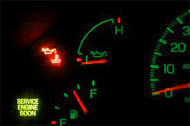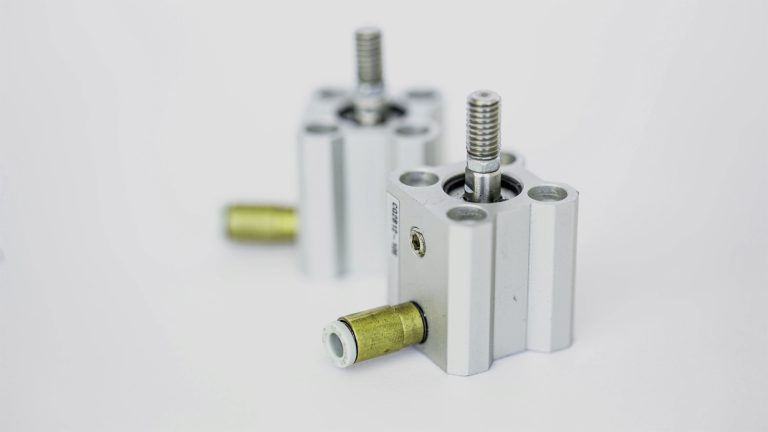“Sensor Magic: Unveiling the Map Sensor Trick for Automotive Wizardry!” – 2023
Introduction
Brief Overview of Map Sensors
Map sensors, also referred to as pressure sensors play a vital role in the electronic control systems of modern internal combustion engines. These sensors continuously monitor the pressure, within the intake manifold. Provide information to the engine control unit (ECU) for optimal fuel injection and engine performance.
Map sensors are used in internal combustion engines to measure the pressure, inside the manifold. The intake manifold is the pathway through which air enters the engine after going through the throttle body.
How Do Map Sensors Work? – Map Sensor Trick
There are two types of Map sensors commonly used in automobiles. One type is called Absolute Pressure (AP) Sensors, which directly measure the pressure within the manifold. This information is crucial, for calculating fuel injection. The other type is Differential Pressure (DP) Sensors, which compare the pressure within the manifold to pressure as a reference. Although less common than AP sensors DP sensors have their advantages, in applications.
The significance of Map sensor tricks goes beyond ensuring fuel injection. They can also be employed to optimize fuel efficiency in vehicles.
By adjusting the signal from the Map sensor to show a pressure, in the manifold the ECU can react by reducing the amount of fuel delivered which could result in better fuel efficiency.

Enhancing Engine Performance
The Map sensor trick, when applied appropriately, can also enhance engine performance. By instructing the ECU to deliver a slightly richer fuel mixture, the Map sensor trick can potentially increase power output and torque, particularly in the upper RPM range.
Common Misconceptions Debunked
It’s important to note that the Map sensor trick should be approached with caution and proper understanding. While it may offer potential benefits, excessive manipulation of the Map sensor signal can lead to detrimental effects, such as incomplete combustion, increased emissions, and potential engine damage.
Historical Evolution of Map Sensor Tricks
Early Innovations in Vehicle Performance
The desire to improve vehicle performance has always been a focus, in the field of engineering ever since cars were first invented. Early enthusiasts used methods to customize their vehicles, such as making adjustments to carburetors ignition timing and exhaust systems.
In the 1970s the introduction of fuel injection (EFI) systems brought about a change in engine control. These systems offered a level of precision and control while also creating opportunities for manipulating engine parameters.
The development of Map sensors in the 1980s enhanced engine control by providing real time feedback on manifold pressure. This valuable data became a component for the ECUs calculations concerning fuel injection and ignition timing.

Techniques for Modifying Map Sensors
Step by Step Guide for Basic Map Sensor Modifications
Before attempting any alterations to the Map sensor it is crucial to understand both the risks and benefits involved. Incorrect manipulation of the Map sensor signal can have effects, on engine performance, emissions levels. Even result in potential damage.
Identify the Map Sensor Location: Map Sensor Trick
The Map sensor is typically located on the intake manifold, often near the throttle body. Consult your vehicle’s repair manual to locate the exact position.
Disconnect the Electrical Harness:
Carefully disconnect the electrical harness from the Map sensor. Use caution to avoid damaging the connector or wires.
Access the Map Sensor Adjustment Screw:
Depending on the Map sensor design, there may be an adjustable screw or potentiometer that allows for fine-tuning the signal.

Make Small Adjustments:
Using a small, precise screwdriver, make small, incremental adjustments to the Map sensor adjustment screw. Avoid making drastic changes, as even slight alterations can significantly impact engine behavior.
Monitor Engine Response:
After each adjustment, start the engine and carefully monitor its response. Note any changes in idle speed, throttle response, or engine performance.
Reiterate and Refine:
Continue making small adjustments and observing engine response until you achieve the desired outcome. Be patient and methodical, as finding the optimal setting may require several attempts.
Tools Required for Successful Execution – Map Sensor Trick
To safely and effectively perform Map sensor modifications, you will need the following tools:
Small Screwdriver: A precision screwdriver is essential for making fine adjustments to the Map sensor adjustment screw.
Multimeter: A multimeter can be used to measure the voltage output of the Map sensor, providing a more precise indication of the signal being sent to the ECU.
Vehicle Repair Manual: Refer to your vehicle’s specific repair manual for detailed instructions on locating and adjusting the Map sensor.
Safety Measures and Precautions – Map Sensor Trick
When you’re working on the system of your vehicle it’s crucial to prioritize safety. Here are some important steps to follow;
Disconnect the Battery; start by disconnecting the battery terminal before making any electrical connections. This will prevent any circuits or potential electrical hazards.
Wear Safety Gear; Make sure you wear safety glasses and latex gloves to protect yourself from any dangers.
Find a Well Lit Area; It’s essential to work in a lit space so that you can clearly see what you’re doing and avoid making mistakes.
Seek Assistance if Needed; If you come across any difficulties or uncertainties don’t hesitate to ask for help, from a mechanic or someone knowledgeable, about automobiles.
By taking these precautions will ensure your safety while working on your vehicles system.
Troubleshooting and Common Issues – Map Sensor Trick
Identifying Problems Post-Map Sensor Modification
While Map sensor tricks can potentially enhance engine performance, improper modifications can lead to various issues, including:
Rough Idle: Excessive Map sensor adjustments can cause the engine to idle erratically or stall.
Hesitation or Stumbling: Abrupt changes in the Map sensor signal can cause the engine to hesitate or stumble during acceleration or deceleration.
Check Engine Light Illumination: Severe Map sensor tampering may trigger the Check Engine Light, indicating a malfunction that requires diagnosis and repair.
Increased Emissions: Altering the Map sensor signal can disrupt the delicate balance of air-fuel mixture, potentially leading to increased emissions.
Addressing Performance Fluctuations
If you encounter performance issues following Map sensor modifications, consider the following steps:
Start with Small Adjustments: Reverse the Map sensor adjustments gradually, making small changes until the problems subside.
Reset the ECU: The ECU may store adaptive data based on the modified Map sensor signal. Resetting the ECU can clear this data and allow it to relearn the engine’s behavior under normal conditions.
Seek Professional Assistance: If the issues persist, consult a qualified mechanic or automotive specialist for further diagnosis and potential repairs.
Seeking Professional Assistance When Needed
In situations where troubleshooting becomes challenging or beyond your expertise, don’t hesitate to seek professional assistance:
Qualified Mechanics: Experienced mechanics can provide valuable insights, identify potential underlying issues, and perform necessary repairs.
Automotive Enthusiast Communities: Online forums and enthusiast communities can offer guidance, shared experiences, and support from fellow enthusiasts.
Vehicle-Specific Specialists: If your vehicle requires specialized expertise, consider consulting specialists familiar with your particular make and model.
Map Sensor Trick and Environmental Impact
Eco-Friendly Aspects of Map Sensor Optimization
Map sensor tricks, when implemented responsibly, can potentially contribute to eco-friendly driving practices by:
Optimizing Fuel Efficiency: By fine-tuning the Map sensor signal, it may be possible to achieve better fuel economy under certain driving conditions.
Reducing Emissions: By ensuring proper air-fuel mixture, Map sensor optimization can help minimize emissions of harmful pollutants.
Balancing Performance Gains with Environmental Responsibility
While Map sensor tricks can enhance performance, it’s crucial to balance these gains with environmental responsibility:
Prioritize Responsible Modifications: Focus on making subtle adjustments that prioritize fuel efficiency and emissions reduction without compromising engine longevity or safety.
Monitor Environmental Impact: Keep track of fuel economy and emissions changes to ensure your modifications are not having detrimental environmental consequences.
Consider Eco-Friendly Alternatives: Explore other eco-friendly modifications, such as using lighter wheels or installing a more efficient air filter, to further reduce your vehicle’s environmental footprint.
Conclusion
Using Map sensor tricks is a way to potentially improve engine performance and fuel efficiency. However it’s crucial to approach these modifications with care and have an understanding of how they can affect engine behavior, emissions and safety.
By making adjustments closely monitoring the engines response and practicing modification techniques car enthusiasts can explore the potential advantages of Map sensor tricks while also prioritizing environmental sustainability.
FAQs
Are Map sensor tricks safe for my engine?
The safety of Map sensor tricks depends on the extent of the modifications and the individual vehicle’s characteristics. Excessive or improper adjustments can lead to adverse effects on engine performance, emissions, and even potential damage. It’s crucial to approach these modifications with caution, make small incremental changes, and closely monitor engine response.
What are the potential benefits of Map sensor tricks?
Potential benefits of Map sensor tricks include:
Enhanced engine performance, particularly in the upper RPM range Improved fuel economy under certain driving conditions Reduced emissions with proper air-fuel mixture optimization
What are the potential risks of Map sensor tricks?
Potential risks of Map sensor tricks include:
Rough idle or stalling Engine hesitation or stumbling Check Engine Light illumination Increased emissions due to improper air-fuel mixture Potential engine damage from excessive adjustments
Should I reset the ECU after making Map sensor adjustments?
Resetting the ECU can help clear adaptive data stored based on the modified Map sensor signal and allow it to relearn the engine’s behavior under normal conditions. However, it’s important to note that resetting the ECU may also erase other learned parameters, such as fuel trims and ignition timing maps.
Are Map sensor tricks compatible with all vehicles?
The compatibility of Map sensor tricks varies depending on the vehicle’s specific engine management system and Map sensor configuration. Some vehicles may exhibit more pronounced effects from Map sensor adjustments than others. It’s essential to research your particular vehicle and consult with experienced enthusiasts or mechanics familiar with your make and model.



